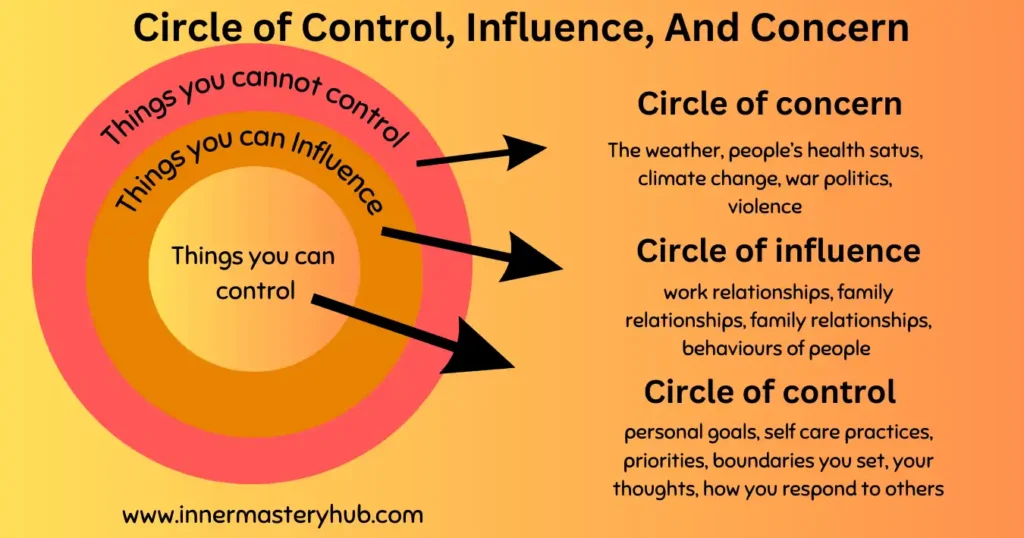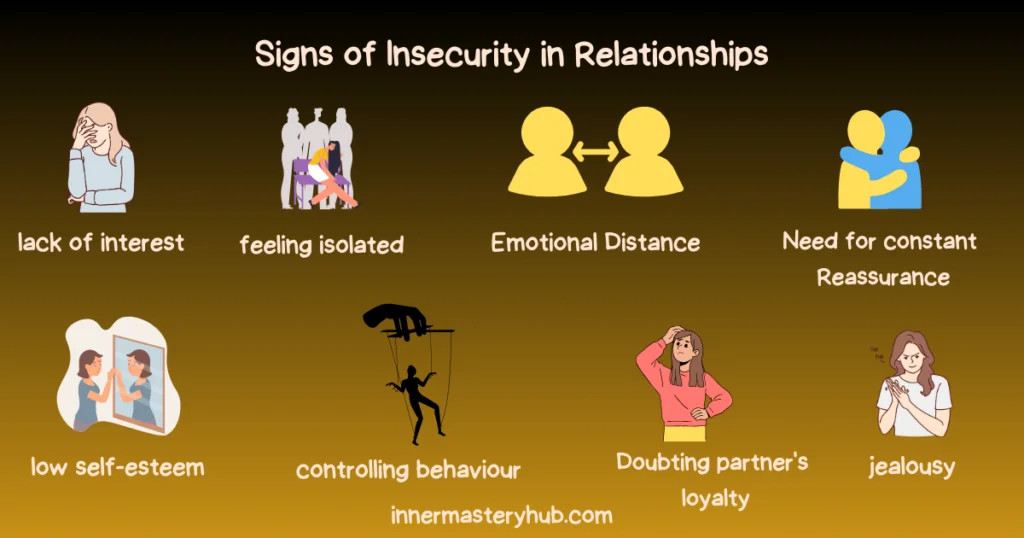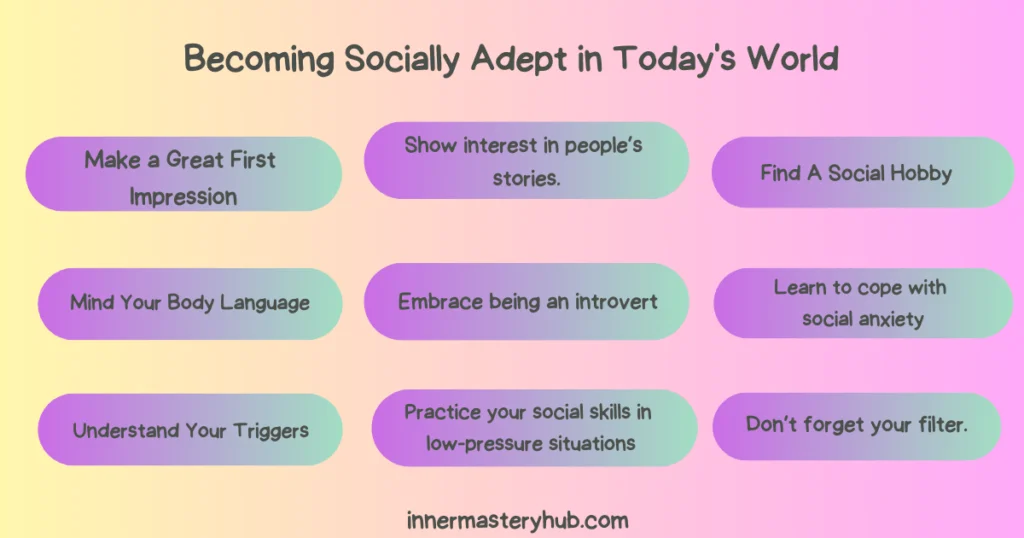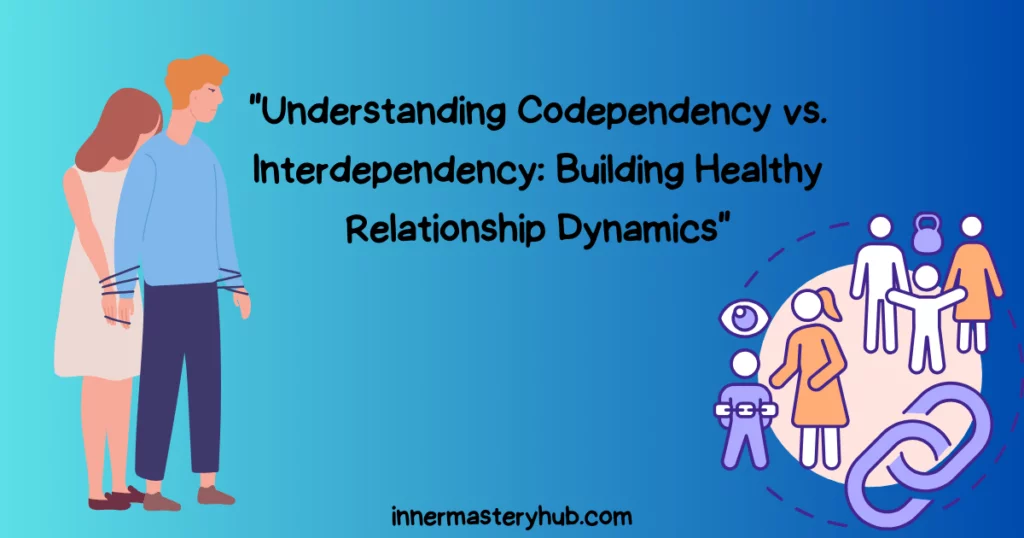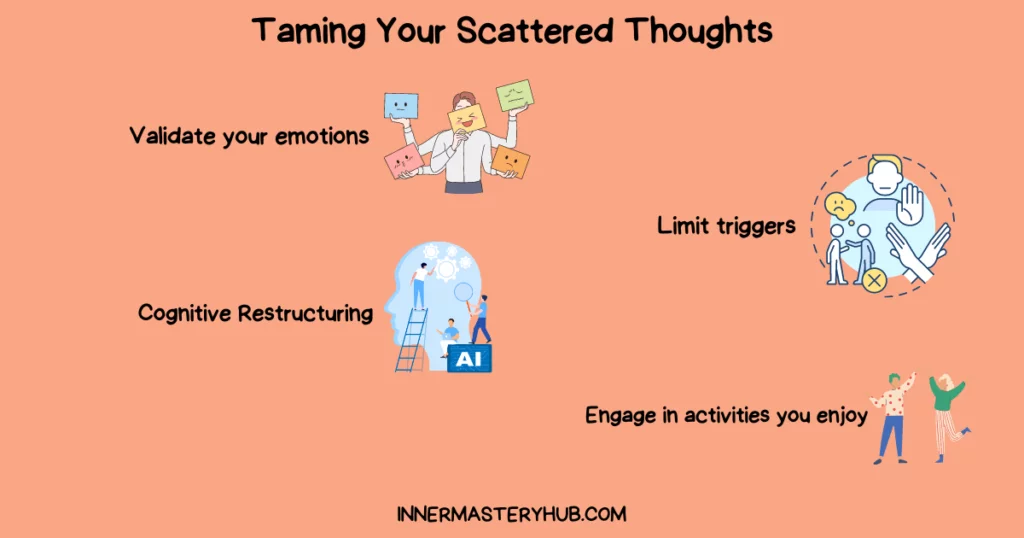
Ever find yourself staring at a blank piece of paper with a million ideas flying through your head but none of them sticking? Staying focused seems like a far-off fantasy, even if you’re managing an increase in tasks.
We invite you to explore the enigmatic realm of “scattered thoughts.” Ideas flutter around like fireflies and focus seems like catching smoke, and we’ve all been there. Don’t worry, though, fellow multitaskers of the mind! We’re using our scattered genius instead of just lamenting it today.
You can go from mental turmoil to creative mastery with the help of this post. We’ll examine proven techniques for bringing your disorganized thoughts into order, transforming them into useful action, and discovering breakthroughs you were unaware you possessed.
So grab your favorite drink, keep your inner critic at bay (for the time being), and get ready to turn those “scattered thoughts” into brilliant gems of success!
Table of Contents
How do you deal with your scattered thoughts?
If you’re having scattered thoughts right now, you can take various actions to manage or prevent them:
1. Focus on your breath
Find a quiet place to sit or lie down, whatever relaxes you. Close your eyes—we’re minimizing distractions. Set a 5-minute or 20-minute timer. Please take a few deep breaths to shake off the day, then let your breathing do its thing. Make friends with your breath—observe your chest and airflow.
The goal is to gently steer your attention back to your breath when it decides to conduct mental gymnastics. If it helps, count each breath: inhale, exhale, 1, 2, etc. Think of thoughts like clouds. They come and go, but your breath stays. If your mind’s playing hard, breathe deeper—good energy in, bad energy out.
Remember, it’s about limiting thoughts, not erasing them. Like training a puppy, you must be patient and gentle. Do not judge. Scattered thoughts are their duty. Please return them. As you grow used to it, your focus may improve. Please practice this daily and observe how it helps tame scattered thoughts.
RELATED; Compulsive vs. Impulsive Behavior Explained
2. Eliminate stress before sleeping
Here’s how to soothe tensions and control late-night thoughts. First, build a relaxing pre-bedtime routine to tell your brain to relax. Maybe dim the lights, drink non-caffeinated tea, or read a comfortable book.
Putting those screens away is the major point. Blue light from phones and computers disrupts sleep. Spend 30 minutes screen-free before bed—you won’t regret it. Next, write your thoughts. Write down those million thoughts that are dancing in your head. A mental declutter will amaze you with how much it helps.
Deep breathing is your bedtime friend—slow, deep breaths in and out through your nose and mouth. Your body knows it’s time to unwind with this mini-relaxation session. Please consider a gratitude check. Consider two things you’re grateful for to shift your focus from stress to positivity. Practicing mindfulness allows you to reset and calm your mind and better cognitive functioning.
Finish with a sleep-friendly space. Make your room warm with a comfy mattress, soft lighting, and lavender. Bedrooms should be sleep retreats, not stress zones.
Try these, and you’ll kick tension out of the bedroom like a superhero. Sweet dreams!
RELATED: Locus of Control Theory In Psychology: Internal vs External
3. Focus on what is Right
The most crucial thing for you to tame your scattered thoughts right now is to decide what it is. Because you can’t do everything at once, you need to be aware of the energy you have right now. It is possible that what you need to accomplish at this very moment is to eat lunch. Perhaps it is taking on a challenging assignment, or perhaps it is a simple task. Choose your verdict.
4. Divide bigger tasks into smaller chunks
Big, difficult activities can be divided into smaller, less daunting ones. By dividing the tasks into smaller, more doable portions, you can avoid feeling overburdened by the sheer number of tasks ahead. Using a Mind Map , You Can Organize These Tasks Visually, Making Them Less Difficult To Deal With.
5. Minimize distractions
Distractions can be minimized by turning off your phone and other electronic devices. Email, SMS, social media, television, and the internet are all off-limits. Wow!
If you eliminate all of those possible distractions from your life, you may have plenty of time to finish what needs to be done. We don’t realize how much time is wasted on diversions because they are so common in our lives.
RELATED: 8 Signs Of An Extreme Introvert
6. Take some time off.
Take a rest once the timer on your device has started. Allow yourself a five-minute break after fifteen to twenty minutes so that you may stretch your legs and clear your mind. Enjoy a glass of water. Watch some videos of cats.
Practice a meditation that focuses on your breathing. Engage in whatever rejuvenates you. Utilize a timer, and when your break is over, return to the task you were working on. After approximately one hour of this cycle, you should take a longer break. Take some time to relax and organize your thoughts.
7. Increase your level of awareness.
Be conscious of your body and the environment around you while taking your breaks. If you are sitting in your chair, do you feel comfortable or like you are holding your body tight? What is the flavor of the water or other beverage you consume?
What does it feel like when you drink it? At this moment, do you feel warm or cold? Are you experiencing a breeze? Which sounds are you hearing?
Mindfulness practices allow you to control your feelings and stress levels more. Consider how you currently feel and what you would like to alter. You will be in a much better position regarding returning to your work.
Causes of scattered thoughts
You could experience scattered thoughts for many different reasons, which is the annoying sensation of your mind being like a pinball machine stuffed with a million ideas constantly bouncing about. The following is a list of some of the most usual mental health symptoms:
Anxiety
One of the main causes of the problem of disorganized thoughts is anxiety. It can lead to excessive worry, an inability to focus, and a tendency to switch between ideas.
Depression
Feelings of low mood and lack of drive are hallmarks of depression, which can make it difficult to focus and fully engage in activities, leading to a fragmented mind.
ADHD
The main symptoms of attention deficit hyperactivity disorder, or ADHD, include trouble focusing and controlling one’s rambling thoughts, which can impair concentration.
Bipolar disorder
The inability to focus on a single idea for a lengthy time and hurried or disorganized thoughts are hallmarks of the manic phase of bipolar disorder.
How to cope with painful memories
Although dealing with upsetting memories and racing thoughts can be difficult, you’re not by yourself. The following techniques can assist you in navigating this process:
1. Recognize your emotions and give them purpose; do not attempt to suppress them. Accept your pain instead, and allow yourself to grieve or express your emotions in healthy ways, such as journaling, talking to a confidant, or creating art or music.
2. Attend to your own needs. Give your body, mind, and soul the attention they need. This could be doing yoga or meditation, getting enough sleep, eating a balanced diet, exercising frequently, spending time in nature, or pursuing interests or hobbies.
3. Get help. Speak with friends, relatives, or a therapist for professional guidance and consolation. Talking to someone who understands can help you process what happened to you and learn healthy coping mechanisms.
4. Face negative thoughts. Bad memories sometimes lead to negative thinking and self-blame. Try facing these thoughts and replacing them with more affirming and practical self-talk.
5. Retell the story. You cannot change the past, but you can change your perspective on it. Try to learn from or take advantage of possibilities for personal growth, even if your experiences were difficult. Remember that overcoming challenges leads to resilience.
6. Have patience. Healing takes time. Be kind to yourself and avoid evaluating your progress. There will be good and bad days, but if you work hard and have the correct support, you can overcome the pain and find serenity.
How do you forget unwanted memories?
Regretfully, undesirable memories cannot be completely forgotten given what we currently know about the brain. Our own identity is woven into the fabric of our memories, even the bad ones. However, there exist techniques to cope with painful memories and mitigate their negative impact on your life. The following are some strategies that you could use:
Limit triggers
Determine the events or items that bring up unpleasant memories, then try to avoid them. This could be cleaning up your living area, switching up your commute to work, or not following specific users on social media.
Cognitive Restructuring
Cognitive restructuring includes confronting negative ideas and beliefs related to the memories and substituting them with more powerful and realistic ideas.
Engage in activities you enjoy
Engage in the things you enjoy doing. Take part in things that you enjoy and find fulfilling to distract yourself from bothersome thoughts. Exercise, spending time outdoors, listening to music, and taking up hobbies are all examples of things that could be great ways to divert attention.
Validate your emotions
Attempting to suppress unpleasant memories is often ineffective; instead, it is critical to recognize and validate your emotions. Rather, you ought to embrace the pain and allow yourself to feel and communicate healthily. Journaling, chatting with a trusted friend, or doing artistic pursuits like painting or music can all help you do this.
EMDR (Eye Movement Desensitization and Reprocessing)
The treatment known as Eye Movement Desensitization and Reprocessing, or EMDR for short, uses eye movements to help reprocess traumatic memories and reduce their emotional impact.
Seek professional help
Consider attending therapy to process your memories in a safe and supportive environment. Through cognitive behavioral therapy (CBT) techniques, a therapist can help you develop coping strategies and reframe negative thoughts.
RELATED POSTS
11 Ways To Figure Out Why You Feel Like “What’s wrong with me
Emotional Regulation: Skills, Exercises
FAQS
Mindfulness techniques for dealing with scattered thoughts.
Put mindfulness practices into practice to deal with rambling thoughts. Start by focusing on breathing techniques to help you focus. Keep an open mind and let your thoughts come and go without passing judgment. Take part in body scan meditations, focusing on each bodily part. These methods encourage presence and aid in controlling and calming erratic thoughts.
Creative writing prompts for scattered thoughts.
To gather stray ideas, use creative writing prompts. “Describe a dream in vivid detail” or “Explore a childhood memory” are good starting points. These activities transform rambling ideas into coherent stories, stimulating imagination and providing a healthy platform for communication. In order to motivate and structure your writing, embrace the flow of thoughts.
Mind mapping tools for organizing scattered thoughts
Apps like MindMeister and XMind help structure ideas, resulting in a greater understanding of relationships and priorities. Mind mapping tools provide a visual way to organize disorganized thoughts. These technologies improve organization, promote a more methodical and intelligible thought process, and facilitate brainstorming and planning by visually connecting ideas.
Coping strategies for a mind with scattered thoughts
If your mind is racing with ideas, try mindfulness exercises like meditation and deep breathing. Use organizational tools like to-do lists, create a daily routine, and divide work into manageable chunks. Make self-care a priority, get adequate rest, and think about asking friends, family, or experts for help if you need it.


